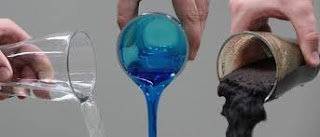BOOST YOUR MIND
Table of Contents
What happens when you put one glass of water on the floor ( except scolded by mom ). It simply spread all over the floor in no time. But what happens when you put one glass of honey on the floor. Does it flow or spread on the floor quickly. The answer is simply NO. It just stick at the point where it poured or slides a little bit. This is happens because of the fluid property widely known as “Viscosity”. Here in this we will discuss everything about Viscosity in detail.
WHAT IS VISCOSITY?
Viscosity is the property of fluid which determines its resistance to shearing stress applying on the fluid particles. It generally resist the motion between the two layers of fluid. Simply we can say that doesn’t allow the fluid to flow smoothly over the surface or between two layers.
Viscosity is due to cohesion and molecular momentum exchange between two layers.
For an example, we know that the syrup or honey is thicker than the water. Thus we can say that honey or syrup is more viscous than water.
TYPES OF VISCOSITY AND THEIR UNITS WITH FORMULA
Viscosity is generally of two types:
(a.) Dynamic viscosity
(b.) Kinematic viscosity
Let’s understand the basics of these two viscosity with their formulas.
* According to Newton’s law of viscosity, “The shear stress on a fluid is directly proportional to the rate of shear strain or velocity gradient”. Mathematically,
𝜏 α du/dy
𝜏 = μdu/dy
Where μ = coefficient of viscosity or absolute viscosity or dynamic viscosity.
Unit of dynamic viscosity:
NS/ m^2 = Pascal second
* Kinematic viscosity is defined as the ratio of dynamic viscosity to the density of fluid. It is denoted by ν. Mathematically,
ν = μ/ρ
Unit of kinematic viscosity:
m^2/ sec.
Special note on viscosity:
• Viscosity of liquids decreases with increase in temperature. Exception is water. Because upto 4°C its viscosity increases after that it decreases.
• Viscosity of gases increases with increse in temperature.
Also read this : What is surface tension? Definition, units, examples, measurement.
WHY SHOULD WE MEASURE VISCOSITY?
The collection of data of viscosity gives an exact idea to the manufacturers that how the material will behave in every circumstances in actual working world.
For example if the viscosity of the gums or jels are not under the correct order and standard then sometimes it can be so difficult to pump out of the tube or sometimes it just pumped too much and spread all over.
Thus it is quite necessary to measure the viscosity to standardize the fluid materials in a proper and usable value.
EXAMPLES WHERE VISCOSITY MEASUREMENT USED
Below are the some examples where viscosity measurement is find great application.
* FOOD
Viscosity measurement is important and vital in food industry for the efficient and effective performance of food material.
It becomes very important to maintain a standard viscosity from the preparation of the food. It greatly affects the rate at which food passes through the main line, how much time it takes to set or dry and in which condition it will travel and dispenses to the customers. The production process has to be designed keeping the viscosity of the product in mind and making sure that the pipe provides a optimize flow as well as despensers exert right amount of force having the food in package not coming out of it.
* ADHESIVES
For the selection of a right adhesive you have to consider about how the adhesive will flow. Whether it flow smoothly or a little bit i.e. very slowly or it will stop at the instant. Low viscosity adhesive will flow more readily than high viscosity adhesive. So you want the adhesive to just stop the point where you apply it then a higher viscosity adhesive should be used.
* COSMETICS
Cosmetics should designed according to the uses and need of the customers and thus viscosity should be well maintained in a standard order.
* PETROLEUM
